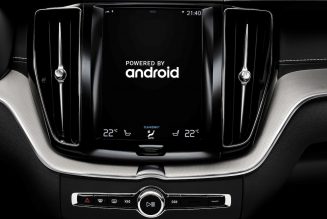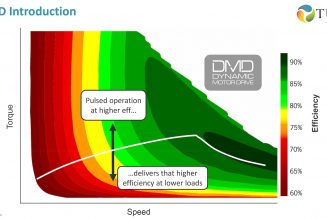Virtual CES 2021 sucked as much as Virtual Everything Else did, but compelling news broke regarding lidar and autonomous driving. I’m not dialed in enough to sort lidar hype from heroics, so I connected with Tom Jellicoe, an optics expert at the Technology Partnership, a U.K.-based consultancy. Jellicoe was kind enough to Cambridge-mastersplain these latest “third-generation” lidar sensors and their VCSEL array semiconductor lasers to me.
For the newbies: Today’s lidar works by emitting pulsed laser light into the surrounding area, which then bounces back to the sensor, allowing the unit to detect its surroundings multiple times per second. This is key to any autonomous vehicle driving and adjusting to everything around it. (Tesla is the lone notable holdout to incorporating lidar into automated driving.)
First-gen lasers were super expensive, so lidar units generally spun them around or wagged them back and forth. Second-gen units aimed them at (sometimes tiny) moving mirrors, or they generated flash images for shorter-range sensing.
Now, the iPhone 12 Pro incorporates a cheap new type of lidar, known as a vertical-cavity surface-emitting laser (VCSEL), to focus the camera. Here’s why they’re iPhone cheap:
Most semiconductor-based lasers are formed by cleaving light-emitting diode semiconductor chips, with the laser beam emitted from the exposed edge. They’re tricky to split, so there’s a lot of scrap, and assembling them onto a circuit board is time consuming. With VCSELs, the laser light is emitted perpendicular to the chip surface from a cavity etched into said surface. This makes it far easier and cheaper to assemble a vast VCSEL array, making true solid-state (no moving parts) lidar affordable. These lasers are tiny enough to emit brighter, farther-reaching light without harming anyone’s eyes downrange.
Jellicoe identified three important players: Opsys Technologies of Israel employs thousands of VCSELs, each addressing a particular spot on a single-photon avalanche detector (SPAD) receiver chip, similar to that of a digital camera. Opsys flashes individual VCSELs sequentially—some of which can operate at different light wave frequencies to eliminate crosstalk. It scans the horizon 1,000 times per second, measuring the time the light takes to bounce back to the receiver.
Downsampling the results to 30 frames/second for autonomous systems enhances resolution enough to identify the make of a vehicle ahead. Maximum range is 200 meters at a relatively tight 24-degree horizontal field of view, but multiple units can be ganged to broaden the field of view, with software stitching the images together. Lens optics can broaden the target area at shorter range. Automakers envision using six to eight of these roughly $200 units to fully perceive a vehicle’s surroundings. Opsys anticipates volume production in 2023-2024.
San Francisco-based Sense Photonics flashes an entire 15,000-VCSEL array simultaneously, illuminating 140,000 pixels on its SPAD collector. Their twist: Mounting VCSELs to a curved surface to broaden the field of view, but SP’s maximum 200-meter range over a 30-degree horizontal field is achieved using a flat chip. Cost is currently estimated “in the hundreds” of dollars, with production expected by late 2024.
Hailing from Hamburg, Germany, the IbeoNEXT employs a 128 by 80 array of VCSELs (10,240 of them) and splits the difference between the above two: It flashes horizontal rows of VCSELs to generate a vertical line scan. Optical lens packages tailor the field of view and range, with the longest range (up to a claimed 250 meters) covering a narrow 12-degree horizontal field of view. The broadest field is 60 degrees at considerably shorter range, with a 120-degree lens in development.
What’s next for lidar? Aurora and Aeva are developing Frequency Modulated Continuous Wave lidar, sometimes called 4D lidar. Instead of measuring the time it takes for flashes of light to return, these lasers stay on, varying their light frequency. The Doppler shift in the reflected light wave determines the distance and velocity of every reflected pixel at distances of 300 meters or more.
These lasers and their waveguides are not iPhone cheap, so many require steering like the first-gen units. Expect to see these initially on commercial trucks, which can tolerate higher prices and require greater warning distances to brake or swerve.
Jellicoe’s biggest CES 2021 revelation: news that Israeli computer-vision firm Mobileye—the folks whose work with Tesla convinced Elon Musk that radar and cameras alone could power Autopilot—is finally entering the lidar biz with an FMCW system-on-chip design. Might this convince Elon himself of lidar’s virtues by the next CES?










